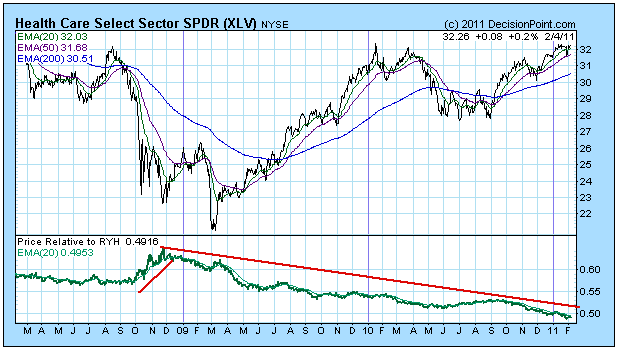(This is an excerpt from Monday's blog for Decision Point subscribers.)
One of the things I constantly flog in this blog is that equal-weight indexes usually perform better than cap-weighted indexes. The reason they perform better is that smaller-cap stocks normally perform better than large-cap stocks, and the smaller-cap stocks carry a heaver weighting in equal-weight indexes, thereby enhancing performance.
Here is an excerpt from yesterday's Decision Point Alert Daily Report. In the bottom section we track 27 indexes, 22 of which are pairs of cap-weight/equal-weight indexes. Note that, with the exception of Materials and Utilities sectors, all sectors and indexes generated buy signals about the same time. Also note that, where paired indexes generated buy signals on the same date, all the equal-weight indexes have out performed their cap-weighted counterparts, except the Nasdaq 100.
The most astonishing difference is in the Health Care sector, where the Health Care Equal-Weight ETF (RYH) has a profit of about double that of the Health Care SPDR (XLV) -- +18.2% versus +9.2%. Here is a chart of RYH with a relative strength comparison to XLV. Since the beginning of the bull market the trend of relative strength has been up, but you can see that the equal-weight index is noticeably weaker during declines.

This next chart is just the flip side, showing XLV with a relative strength comparison to RYH.
Finally, let's have a look at the Rydex S&P Equal-Weight ETF (RSP). It was up about 150% in the 2002-2007 bull market versus only 100% for the SPX. And since the current bull market began, RSP is up about 146% versus only about 86% for the SPX. Pretty amazing.
Bottom Line: In general, equal-weighted ETFs continue to perform better than their cap-weighted counterparts, yet their volume remains relatively low, indicating that investors/traders have never heard of them. "Invent a better mousetrap and the world will beat a path to your door." So far that is not the case with equal-weighted ETFs.









